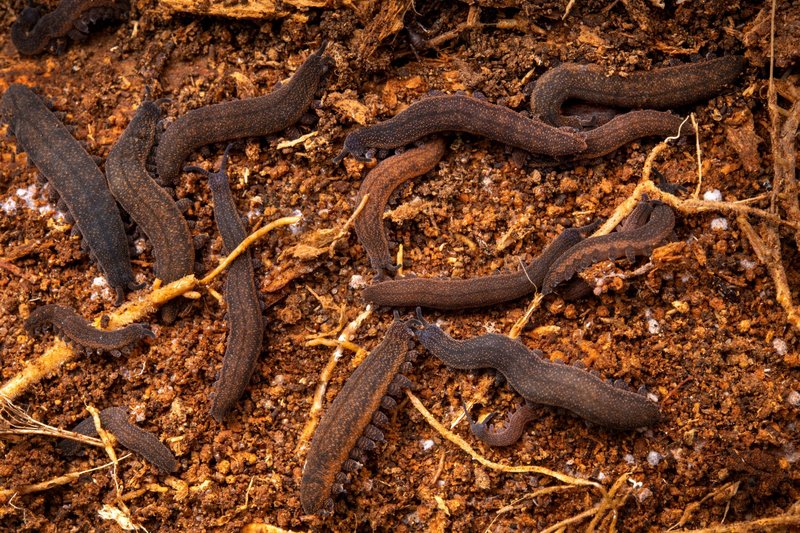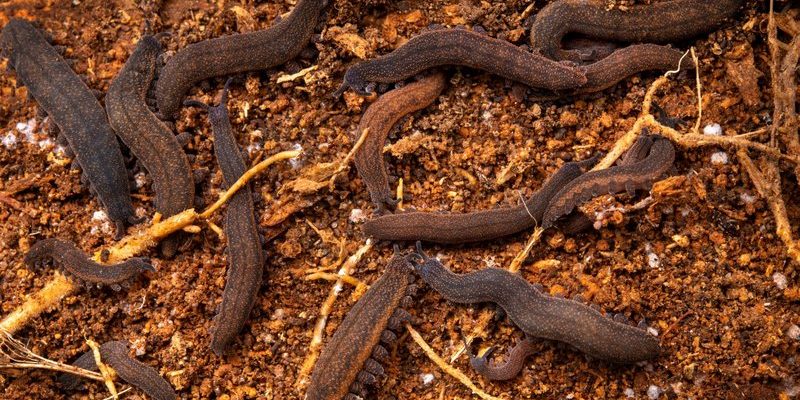
Velvet worms are part of a group called *Onychophora*, and their soft, velvety appearance gives them their name. They’re predominantly found in tropical and subtropical regions, but they have a knack for finding those perfect little pockets of moisture wherever they go. So, what exactly do they prefer in their living spaces? Let’s dig deeper into the habitats that make velvet worms thrive.
The Magic of Moisture
Moisture is king when it comes to velvet worm habitats. These creatures are *moisture-dependent*, meaning they need high humidity levels to survive. Picture a misty rainforest, where the leaves glisten with dew—this is ideal for velvet worms. They’ve adapted to live in environments where moisture is constantly available, which allows them to maintain their soft, pliable bodies. Without enough humidity, they can dry out quickly and face some serious health issues.
Surprisingly, these worms don’t just rely on rain for their moisture fix. They also seek out *microhabitats*—tiny sections of the ecosystem that provide the right amount of dampness. These might include the undersides of leaves, the crevices in tree bark, or even the moist soil in a shady spot. Think about it: it’s like finding a secret garden where everything is just right for them. Their bodies also produce *mucus* that helps retain moisture, giving them an extra edge in this regard.
Here’s the thing: the availability of moisture plays a significant role in determining where they can live. If the climate is too dry, velvet worms just won’t be able to thrive. This dependence on moisture makes them sensitive to changes in their environment, which is why maintaining healthy ecosystems is crucial.
Temperature Trends
Along with moisture, temperature is another key factor in a velvet worm’s ideal microhabitat. These creatures prefer cool to moderate temperatures, typically ranging from about 20°C to 25°C (68°F to 77°F). This temperature range complements the high humidity they crave. Just imagine stepping into a nice, cool room on a hot day—how refreshing, right?
When temperatures rise beyond their comfort zone, velvet worms can become less active, and their overall health may decline. This is where their surroundings come into play. They try to avoid the heat by seeking out shaded areas and damp spots where the temperature is more agreeable. It’s like they know all the best hangout spots in the forest!
In habitats that are too warm, not only does it threaten their moisture requirements, but it can also impact their prey availability. Velvet worms primarily feast on small insects and other invertebrates. If temperatures get too high, these prey animals might also be hard to come by. It’s a delicate balance that velvet worms navigate with impressive finesse.
Soil Type Matters
When we think of velvet worms, we often picture them clinging to leaves or crawling along tree trunks. But what about their relationship with soil? In moist environments, the type of soil they inhabit plays a crucial role in their survival. Velvet worms thrive best in *loamy* or *sandy soils* that retain moisture without becoming waterlogged.
Loamy soils, rich in organic matter, create a perfect balance of drainage and moisture retention. They help maintain the damp conditions that velvet worms favor while still allowing air circulation. Imagine a sponge soaking up water—this is how these soils can keep the right moisture level without drowning the worms.
In contrast, compacted or clay-heavy soils can lead to waterlogging, which can be detrimental to velvet worms. They need enough space to move through the soil and find food, so a well-aerated environment is essential. When you consider how these worms navigate their world, it makes perfect sense that they’d prefer living in regions with just the right kind of soil to support their needs.
Vegetation and Cover
The type of vegetation in a velvet worm’s habitat is another crucial element. These worms prefer environments with dense foliage, which provides both cover and food sources. Think of a lush forest where sunlight filters through the leaves—an ideal place for these creatures to hide from predators and hunt for their next meal.
Dense vegetation helps maintain high humidity levels as well. It traps moisture in the air and provides shade, which in turn keeps temperatures down. You’ll often find velvet worms lurking under leaf litter, in moss, or among decaying plant material. This natural cover not only protects them but also provides additional moisture, creating a perfect little ecosystem just for them.
Moreover, the presence of certain plants can impact the local insect populations. Velvet worms hunt by using a sticky secretion to catch their prey. With the right vegetation around, they can efficiently find and capture the small invertebrates they love to eat. So, dense, diverse plant life isn’t just a luxury—it’s a necessity for their survival.
How Habitat Loss Affects Velvet Worms
As enchanting as velvet worms are, they face significant challenges today. Habitat loss due to deforestation, urbanization, and climate change has put their survival at risk. When forests are cleared for agriculture or development, these worms lose their moist microhabitats, along with the insects they depend on for food.
Imagine losing your favorite cozy corner of the café where you always go to relax. That’s similar to what these worms experience when their environments are altered. Even slight changes in moisture levels or temperature can create conditions that are unsuitable for their survival.
Conservation efforts are essential to help protect the habitats that remain. By raising awareness about the importance of maintaining these ecosystems, we can help ensure that velvet worms continue to thrive. Supporting local conservation initiatives or participating in habitat restoration projects can make a difference for these unique creatures.
Understanding the habitat preferences of velvet worms gives us a deeper appreciation for these fascinating creatures and the delicate balance of ecosystems. They rely on a combination of moisture, temperature, soil type, and vegetation to thrive. Each of these factors plays a vital role in their lives, and even small changes can have significant impacts.
As we explore these moist microhabitats, let’s remember the importance of conserving our natural environments. Every creature, from the smallest velvet worm to the largest tree, plays a part in maintaining the health of our planet. By valuing and protecting these habitats, we can help ensure that velvet worms and countless other species continue to flourish for generations to come.

